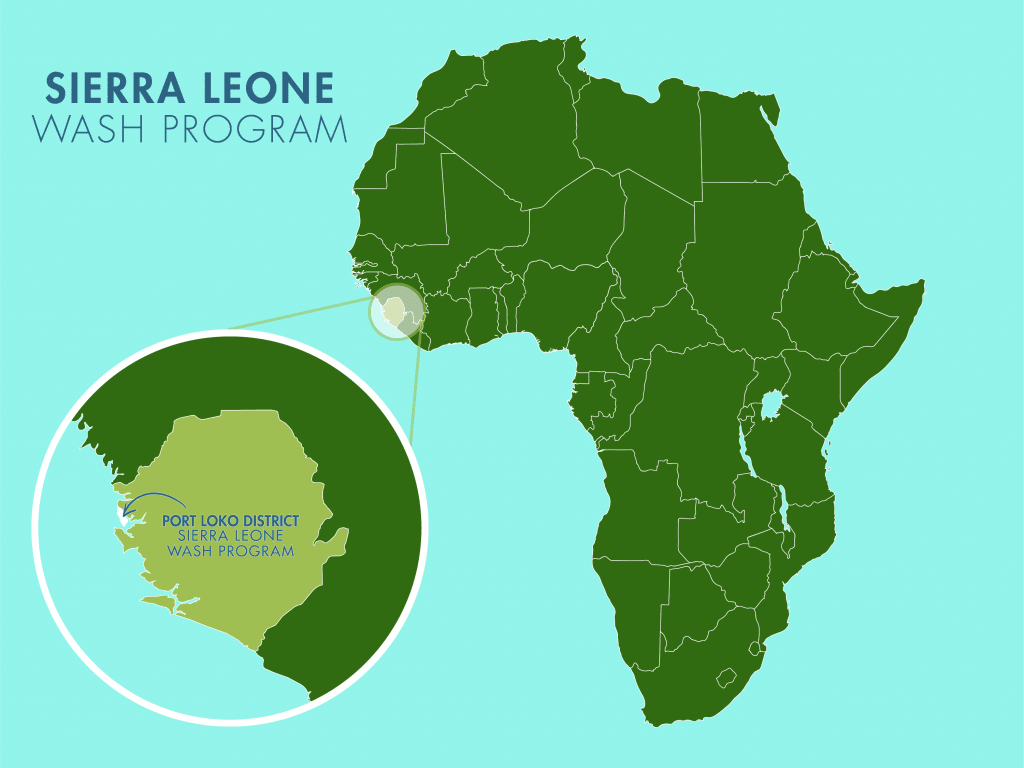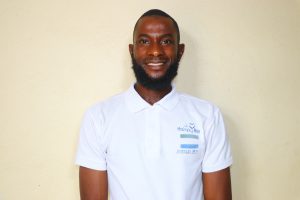In the Mapillah Community, access to clean water is a daily struggle that defines nearly every aspect of life for 285 community members. For seventeen-year-old Aminata, the challenge of fetching water is not just a chore — it’s a barrier to education, rest, and opportunity.

Mapillah Community's water source.
Every day, Aminata walks long distances to collect water from a swamp well — the only source available to her family and neighbors.
She explains, “We do not have [a] safe water well in the community, and the only water I access is the swamp well. It is very far from the community, and I often walk long distances to fetch water from the swamp. I spend some minutes to reach the source before I return home. Sometimes the swamp water gets dirty, and during that moment, I will sometimes wait for it to be clean before I can collect water, then return home. Also, I will go fetch water alone, and if I go with a big rubber bucket, it would be very difficult to carry it on my head. This causes me to wait at the water source for someone to assist me. This will cause me to delay at the source before returning home.”

Aminata (in yellow) hauling water with other community members.
Fetching water consumes nearly her entire day — five hours — leaving little time for rest or study.
“The distance to the water source is very far, and carrying a rubber bucket with water on my head is very frustrating. I have other things to do at home, especially going to school from Monday to Friday. I will fetch [a] small [amount of] water to use on those days before going to school. However, I will leave other tasks and do others, and when I return home, I will continue fetching water till I fill all the rubber buckets," Aminata described.
The burden worsens during the dry season, when the swamp begins to dry up. “The scoop hole will [have] low water in the dry season, especially in March. During that time, there will not be enough water in the well," Aminata said.
With fewer options and longer waits, Aminata must spend even more time collecting water — time she wishes could be spent on her education.

The impact on her education is severe. “Fetching water impacts my time at school. I spend a lot of time fetching water every day, and this causes me not to go to school on time. I was late for school and unable to do my homework. This caused me to be flogged at school because I failed to do my homework. I was unable to study, and it is very difficult to perform well in class," Aminata lamented.
Despite the challenges she faces, she dreams of a future where her hard work pays off.
“If all goes well with me, I plan to be a nurse in the future. I will educate the people [and] give medication. I will always stand by to save lives in my country. I hope the burden of fetching water will be reduced one day in my community," she dreamed.

Her hope for clean water runs deep.
“I would be happy if we had [a] water well in my community. It is not easy for me as a child, considering the problems I usually face, to fetch water. In the end, I will be exhausted, and I am unable to study, [or] do my homework due to the burden of fetching water at home. All this makes me feel bad when fetching water every day. I hope one day this will come to [be in] the past," said Aminata.
Aminata’s story reflects the reality of many young girls in the Mapillah Community — resilient, hopeful, and determined to rise above the challenges of water scarcity. Her voice captures both the hardship and the hope that clean water can bring: a chance to study, to dream, and to live a healthier life.
Steps Toward a Solution
Our technical experts worked with the local community to identify the most effective solution to their water crisis. They decided to drill a borehole well, construct a platform for the well, and attach a hand pump.
Well
Abundant water often lies just beneath our feet. Aquifers—natural underground rivers—flow through layers of sediment and rock, offering a constant supply of safe water. A borehole well is drilled deep into the earth to access this naturally filtered and protected water. We penetrate meters, sometimes even hundreds of meters, of soil, silt, rock, and more to reach the water underground. Once found, we construct a platform for the well and attach a hand pump. The community gains a safe, enclosed water source capable of providing approximately five gallons of water per minute. Learn more here!
Community Education & Ownership
Hygiene and sanitation training are integral to our water projects. Training is tailored to each community's specific needs and includes key topics such as proper water handling, improved hygiene practices, disease transmission prevention, and care of the new water point. Safe water and improved hygiene habits foster a healthier future for everyone in the community.
Encouraged and supported by our team's guidance, the community elects a water user committee representative of its diverse members. This committee assumes responsibility for maintaining the water point, organizing community efforts, and gathering fees to ensure its upkeep.

 Borehole Well and Hand Pump
Borehole Well and Hand Pump
 Rehabilitation Project
Rehabilitation Project
















